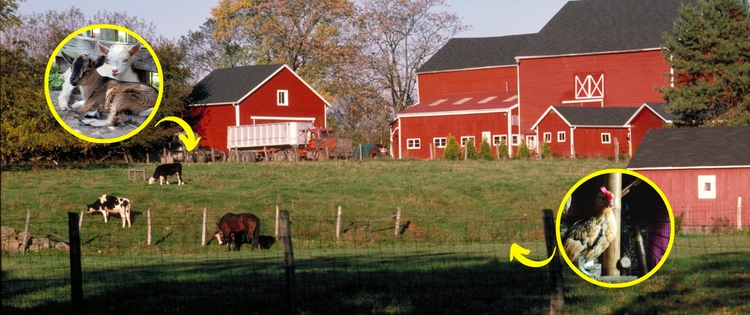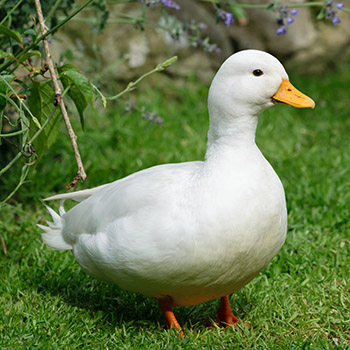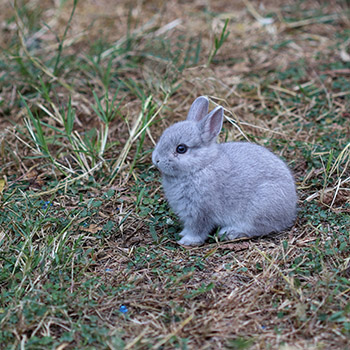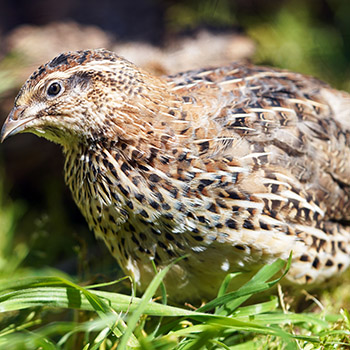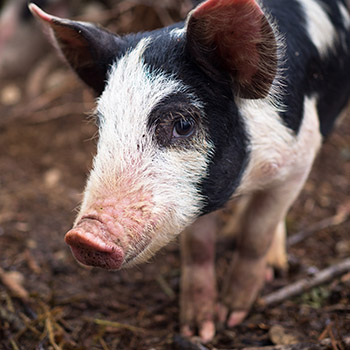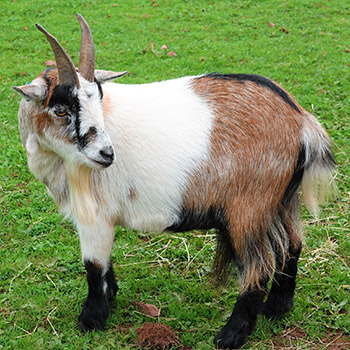You might have a personal preference – maybe your grandparents raised horses on their farm back home, or you think that cattle would be a fun addition to the homestead.
However, the challenge arises when considering their size, which is often impractical for today’s smaller plots of land—unless you have the financial means to purchase a large property.
For many individuals, this isn’t a feasible option. Hence, the surge in popularity of miniature farm animals, as they can comfortably inhabit modern spaces. Here are the top eight to consider raising:
Nigerian Dwarf Goats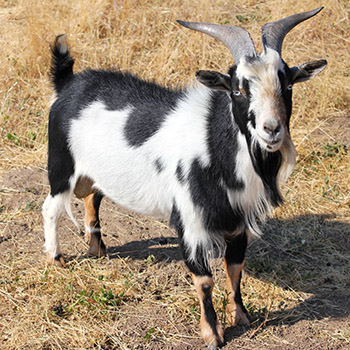
Nigerian Dwarf goats are an absolute delight to have around the homestead! While their friendly, engaging nature is a huge draw, I’ll be the first to admit – goats can be as stubborn as the day is long.
It’s absolutely crucial to cull any real troublemakers from the herd. Those difficult personalities can quickly make life miserable for the rest of the gentle goats.
Initially, we brought the Nigerians on for their rich, creamy milk. But actually milking them? Total pain! Needless to say, we’ve shifted our focus to raising them primarily for their lean, delicious meat.
A word to the wise though – if you have any intention of eating your goats, I’d strongly recommend a larger breed. The cute factor makes it heartbreakingly hard with the little Nigerians.
Call Ducks
Unlike their boisterous mallard cousins, Call Ducks trade in honks and quacks for subtle hisses and huffs.
But the benefits extend far beyond their laidback vocalizations. Call Ducks require minimal upkeep, reaching maturity at just 6-8 months old. That means much less waiting around for those first eggs to appear.
And when they do start laying, they do so prolifically – expect one rich, decadent egg per day, per duck. Whether their eggs actually taste better than mallards’ is up for debate…but they’re certainly every bit as delicious!
Now, let’s address the practical details. Call Ducks are as messy as any duck, regularly coating their surroundings with…well, you know. But consider it a feature, not a flaw!
By situating their pond to flow directly into your garden beds and fruit trees, you’ll receive a steady supply of nitrogen-rich fertilizer. It’s akin to having an infinite composting system!
If you seek a low-maintenance yet highly productive addition to your flock, Call Ducks is worth considering.
Related: Why You Should Raise Ducks Instead Of Chickens
Netherland Dwarfs
If you’re considering raising miniature livestock, rabbits should definitely be at the top of your list. While we have experience with Netherland Dwarfs, feel free to choose whichever breed you prefer.
These little guys are the total package – low-maintenance, highly productive, and just flat-out adorable.
Let’s start with the basics: rabbits are incredibly efficient meat producers. They reach ideal fryer weight at just 3-4 months old with minimal feed input required. Their manure also makes rich, ultra-nutritious fertilizer you can apply directly to garden beds. Plus, with their compact size, you can house a ton of rabbits in a relatively small space.
Thanks to their rapid reproduction rates, growing a sizable rabbit operation from just a couple of starter bunnies is a breeze. You can easily sell extras as prized pets or meat producers.
While relatively quiet and well-behaved overall, rabbits do have their quirks. Their musky scents and constant shedding can be a bit much for some owners. Proper protocol is also crucial to prevent disease outbreaks, overheating in overly stressed colonies, and mischief like chewing on electrical cords.
Coturnix Quail
Coturnix quail is an excellent choice for micro-livestock, particularly suitable for those with limited space or individuals living alone. Their small size eliminates the need for heavy lifting, and processing them for meat is much simpler compared to larger poultry.
Quail are versatile birds, offering a consistent supply of both eggs and meat renowned for their delightful taste.
Feeding quail is cost-effective, as they readily consume basic gamefowl rations or can even thrive on homegrown fodder with minimal effort. Their compact size allows for housing a significant number of quail in a relatively small area.
Bantam Chickens
While a standard chicken weighs several pounds, some bantam hens barely tip the scales at one pound. Talk about petite!
Now, for many chicken breeds you’re familiar with, there’s a bantam version too. But some true bantams, like the Seabright and Dutch varieties, don’t have a larger counterpart.
Don’t write off bantams because of their tiny size though. Sure, their eggs are only about half the size of a normal chicken’s egg. But these poultry are top pest controllers!
Speaking of tiny sizes – bantams require way less space than full-sized chickens. Their coops, nesting boxes, and roosts can all be downsized, making them ideal for smaller homesteads or urban farms. And get this – an adult bantam hen only eats 1-2 cups of feed per day, plus whatever bugs and veggie scraps she can forage.
While not the best for, say, feeding a large family, bantams make fantastic pets and show birds. You can even barter or sell the eggs and chicks. But watch out – despite their feisty personalities, these birds are easy prey for hawks, snakes, and other predators. Keep them secure!
Berkshire Pig
Let’s talk about the Berkshire pig breed. These curly-tailed pigs date back to the 1800s. In fact, the American Berkshire Association formed in 1875 was the world’s first-ever swine registry!
Berkshires are prized for that rich, tasty meat. We’re talking pigs topping 600 pounds at market weight that produce the most succulent, juicy pork you’ve ever tasted.
If you have a small farm or homestead, Berkshires could be your new miniature farm animal. These easygoing breeds are super hardy and excellent foragers. The females also produce plenty of milk for you and their little ones.
Their dark coloring isn’t just stylish either – it helps protect against sunburn so Berkshires can live that outdoor life.
Miniature Cheviot Sheep
While a full-size American Cheviot is a sizable ovine, these miniature versions are miniature enough for your small spaces. We’re talking fully grown ewes capping out around 45-85 lbs and rams just barely hitting 100 lbs. At under 2 feet tall, they’re really quite small!
Miniature Chevies were made to thrive in harsh, windswept climates that would make most other sheep head for the hills.
Pygmy Goats
These goats are really small, standing just about knee-high to the average human. Pygmy goat ladies weigh in between 50-75 lbs, while the fellas are a little heartier at 60-85 lbs.
Don’t let their size fool you though. Pygmies are tough and able to thrive in pretty much any environment you can throw at them. They can also adapt to various diets, eating grains, leaves, twigs, you name it!
Now when it comes to housing, they need an enclosed shelter for sleeping plus plenty of open romping room during the day. Because let me tell you, Pygmies LOVE to climb, jump, and explore. Providing ramps, platforms, and playgrounds is a surefire way to keep them entertained.
Despite their don’t-mess-with-me attitude, Pygmies are actually prey animals. So locking them up safe and sound at night protects them from any predators.
Ready to start raising miniature farm animals? Then start researching zoning laws, sourcing supplies, and preparing their home.
Never Feed THIS to Your Chickens
An Ingenious Eggshell Remedy and 25 Others Made from Things People Usually Throw Away (Video)
What Livestock My Grandparents Raised During The Great Depression
